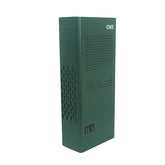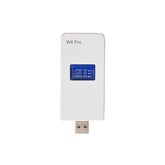How is drone jamming implemented?
UAVs are generally controlled by GPS signals. Generally speaking, there is a certain distance from the control to the drone in the signal propagation, and the signal is relatively weak at this time. Therefore, it is easier to use drone jammers to jam drones at this time, and it becomes easier to interfere with GPS signals. Most consumer drones will choose GPS for flight control, and some GPS signals are not encrypted, and drone jammers just fill this space. At present, the control of drones is mainly realized by radio technology. By sending strong jamming signals and suppressing control signals, the drone can land or return.
By virtue of this principle. A drone GPS Jammer can be installed after the drone is started, and the drone jammer sends jamming signals on all frequencies to the drone, allowing it to leave the operator's control and land automatically without receiving any control signals.

Now, some confidential areas have set up "no-fly zones". Many drone manufacturers have installed it in the built-in components to achieve the effect of drone jamming, so that the drone cannot take off in the no-fly zone. Even if you fly into the "no-fly zone" from other places, the drone will automatically land. Therefore, as long as the UAV jammer simulates the GPS ground signal and determines the geographical location, the UAV can be forced to land. Many drones interface directly with Wi-Fi, allowing users to access mobile devices such as phones and tablets. Therefore, some well-established hacking techniques on the Internet can be directly applied to drones.
At present, domestic UAV jamming technology is still in the developing stage. Due to the continuous update of drone technology by drone manufacturers, the current technology mainly uses signal shielding to interfere with drones.
Drone jamming is the use of special drone equipment to interfere or disrupt the normal operation of other drones or wireless devices. These devices can interfere in different ways, here are some common ones:
Frequency jamming: Drones can use devices similar to electronic jammers to send high-energy electromagnetic waves at target devices, thereby disrupting their communication signals or navigation systems. This type of jamming can easily cause the target device to lose control or get lost.
GPS jamming: Drones can jam a target device's navigation system by sending false GPS signals to it. This kind of interference can cause the target device to get lost in the air or lose its location.
Photoelectric jamming: UAVs can use lasers or other photoelectric devices to illuminate target devices, thereby interfering with the normal operation of their photoelectric sensors. This kind of interference can affect the visual recognition ability of the target device, making it difficult to target or navigate.
Physical jamming: Drones can disrupt the movement of targeted devices by throwing objects at them or using physical devices. For example, drones can throw nets or entangle the propellers of targeted equipment, forcing them to land or lose control.
In general, there are many ways to interfere with UAVs, and different interference methods need to be used for different target devices. With the continuous development of technology, UAV jamming methods are also constantly updated and evolved.













